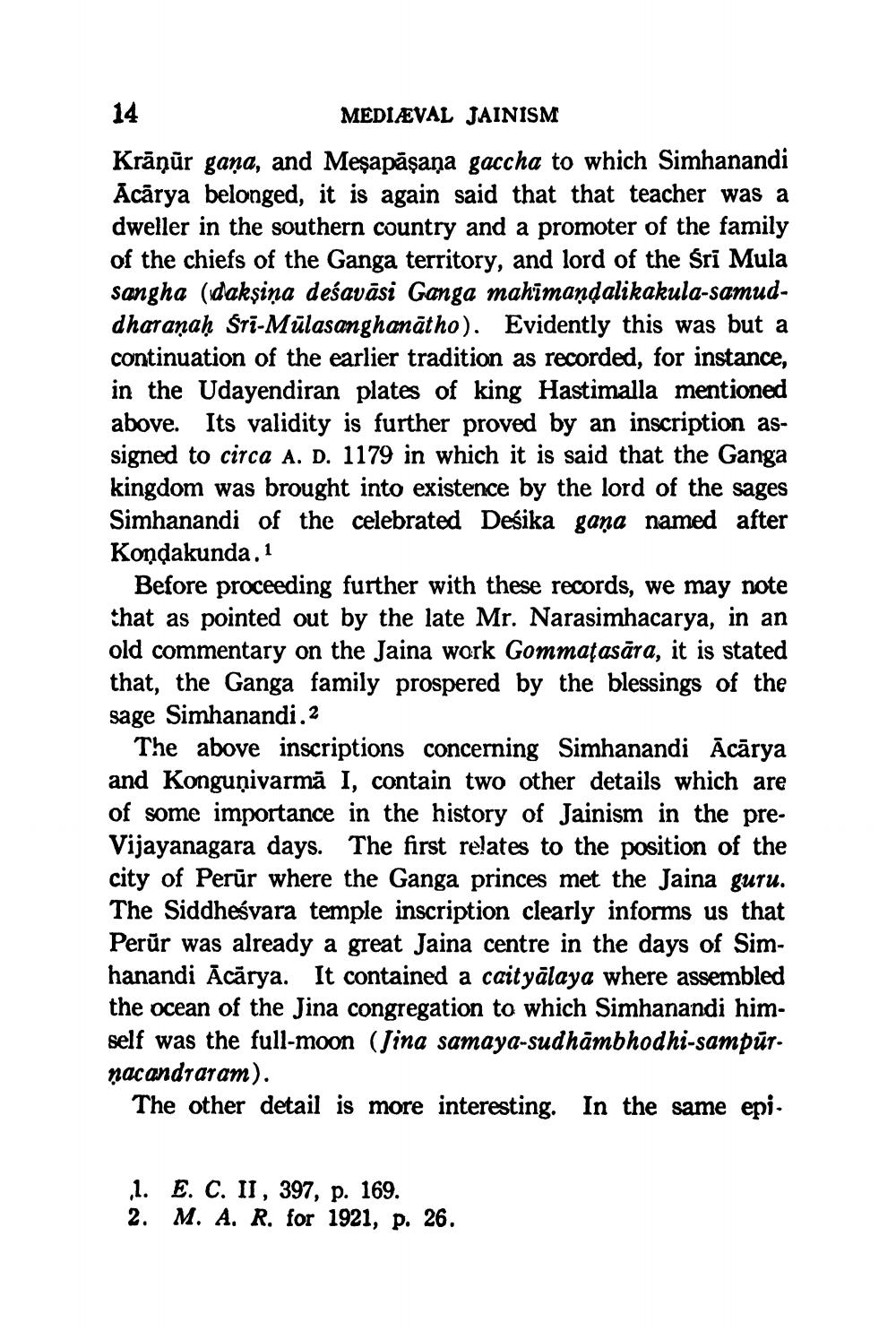________________
14
MEDIÆVAL JAINISM Krāņūr gaņa, and Meşapāşaņa gaccha to which Simhanandi Ācārya belonged, it is again said that that teacher was a dweller in the southern country and a promoter of the family of the chiefs of the Ganga territory, and lord of the Sri Mula sangha (dakşiņa deśavāsi Ganga mahimandalikakula-samuddharaṇaḥ Sri-Mülasanghanātho). Evidently this was but a continuation of the earlier tradition as recorded, for instance, in the Udayendiran plates of king Hastimalla mentioned above. Its validity is further proved by an inscription assigned to circa A. D. 1179 in which it is said that the Ganga kingdom was brought into existence by the lord of the sages Simhanandi of the celebrated Deśika gana named after Kondakunda. 1
Before proceeding further with these records, we may note that as pointed out by the late Mr. Narasimhacarya, in an old commentary on the Jaina work Gommațasāra, it is stated that, the Ganga family prospered by the blessings of the sage Simhanandi.2
The above inscriptions concerning Simhanandi Acārya and Konguņivarmă I, contain two other details which are of some importance in the history of Jainism in the preVijayanagara days. The first relates to the position of the city of Perür where the Ganga princes met the Jaina guru. The Siddheśvara temple inscription clearly informs us that Perür was already a great Jaina centre in the days of Simhanandi Ācārya. It contained a caityālaya where assembled the ocean of the Jina congregation to which Simhanandi him. self was the full-moon (Jina samaya-sudhămbhodhi-sampūt. nacandraram).
The other detail is more interesting. In the same epi.
.1. E. C. II, 397, p. 169. 2. M. A. R. for 1921, p. 26.




